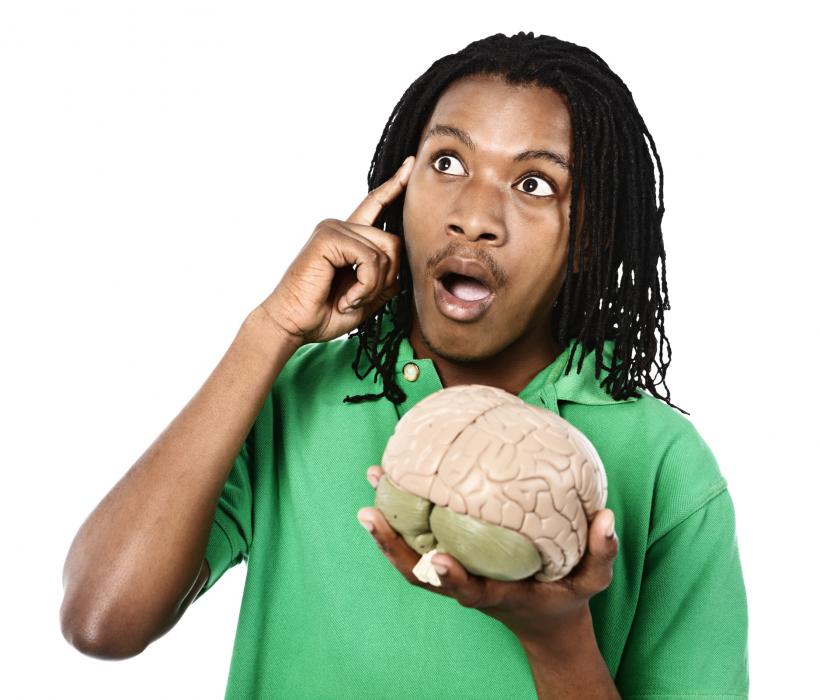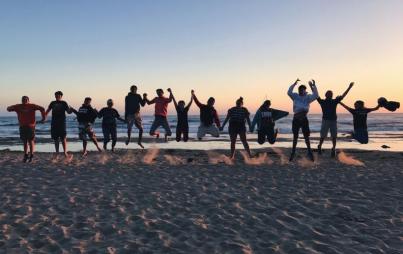
Credit: Thinkstock
If adolescents are seen as innately irresponsible, then adults can, and even need to, take away their rights. In certain circumstances, that can put them at risk.
In America the law treats adolescents as inferior to adults. They aren't allowed to vote or work; they're required to go to school; they can't drink. The justification for this is generally common sense: Adolescents, everyone knows, have poor impulse control, and they make poor decisions. Science is also cited as a support—adolescent brains' are not as fully developed as those of adults. Developing brains function poorly, and kids behave impulsively and are more prone to making bad choices—research confirms what everyone knows.
Or does it?
After all, science and common sense in the past purportedly confirmed the view that Europeans are superior to all other humans—a so-called fact now recognized as both unscientific and immoral. Supposedly scientifically-confirmed arguments for the inferiority of women and black people have also been debunked. In those cases, people have come to realize that prejudice drove both science and common sense. Is it possible that the same phenomenon is happening with regard to adolescents?
There is a strong neuroscience consensus at the moment, based on MRI technology, that adolescent brains are different from the brains of both children and adults. Or, to put it another way, as people go through puberty, their brains change in important ways and continue to develop as they move into adulthood. According to Temple University psychology professor Laurence Steinberg, "incontrovertible evidence" now suggests that, during adolescence, brains change significantly in both structure and function. Among the most important of these changes, Steinberg says, is a greater sensitivity to rewards, which "motivates adolescents to engage in acts, even risky acts, when the potential for pleasure is high." He cited the stereotypical examples of bad adolescent behavior: "unprotected sex, fast driving, or experimentation with drugs."
Ball State University assistant professor of psychology Stephanie Simon-Dack (who, full disclosure, is my cousin) confirmed Steinberg's view. Simon-Dack told me that the treatment of adolescent brains as different is pretty much "settled science." Mylenation—the insulation of neurons that allows for efficient transmission of neural information—isn't complete in the frontal lobe until at least 25. As a result, solid evidence indicates that adolescent emotional reactions are less inhibited than those of adults. "There is more quick action taken and less regulation," she said.
The question, though, is what these differences mean, and how those distinctions should factor into public policy. Adolescent brains may be functionally and anatomically unique, but that doesn't mean that they're deficient or weaker or less reliable. According to the National Institute of Mental Health, "In terms of sheer intellectual power, the brain of an adolescent is a match for an adult's," and "The capacity of a person to learn will never be greater than during adolescence." So in some ways, at least, adolescent brains are equal to, or even superior to, those of adults.
Moreover, brain research can't account for all individual differences. Adolescent brains may be generally different from adult brains, but there are always going to be exceptions. In theory, adults are more thoughtful and responsible and less impulsive. But in practice, I'd trust my 11-year-old to make reasonable choices in the voting booth far more than I'd trust many adults. Who would you rather rely on do just about anything: one of the kids Business Insider has dubbed as America's "most impressive" high schoolers—or Donald Trump?
Brain-development research also leaves a lot of policy-related questions open to debate, according to Amy Hasinoff, an assistant professor in communication at the University of Colorado, Denver, whose work focuses on teen sexting and media use. There's a tendency, Hasinoff says, to look at evidence of differences between the two types of brains, then look at differences in behavior, and assume that the latter is caused by the former. But, she points out, "you can't know . . . that [the behavior is] caused by the brain rather than by culture—there's literally no way to falsify that hypothesis." Adolescents in the U.S. and similar societies get very little decision-making power; that could arguably affect brain development, Hasinoff suggested.
Brain development aside, huge differences in adolescence—what's typical of that period of life—exist across societies and cultures, and even among individuals within groups of people. Margaret Mead's classic study of adolescence in Samoa suggests that, in a culture in which people start caring for their siblings and working earlier, adolescence is not treated as, and does not turn into, a period of unique stress. Even in the West, adolescence is a relatively recent concept in a lot of ways; several hundred years back many children would start working on farms or in apprenticeships much earlier, without the long period of quasi-adulthood that has been institutionalized today. And of course adolescents (like people in general) vary wildly in their abilities and accomplishments. Tavi Gevinson and Lorde were unusually successful and talented for adolescents—but then, they're unusually successful and talented for adults too.
The creation of adolescence as a distinct developmental stage is often seen as a humanitarian advance—a recognition of biological difference that's supposed to protect young people. Child-labor laws are based on the idea that adolescents aren't yet ready to work, and shouldn't be required to do so. According to Steinberg, arguments about the unique nature of adolescent brains were considered in the 2005 Supreme Court decision in Roper v. Simmons, which eliminated the death penalty for juveniles.
Hasinoff points out, though, that treating this view of adolescence as a biological truth has downsides as well. If adolescents are seen as innately irresponsible, then adults can, and even need to, take away their rights. In certain circumstances, that can put them at risk. As Hasinoff told me:
"Teenagers end up infantilized in the law. This is especially a problem for teens that are thrown out of their houses. And this happens a lot for trans teens or gay and lesbian teens when their families don't support them. And because they have no legal rights, they end up doing illegal work to support themselves. And so the whole legal structure makes it impossible for teens to be independent themselves."
There are parallels here with the treatment of women historically. When women are viewed as weaker or less competent, they may receive certain kinds of protection in certain situations—they aren't subject to the draft, for example. But those restrictions have also historically been used to justify denying them the full rights of citizens, which can in turn lead to exploitation, violence, and inequality.
Few people would agree that adolescents should be treated in all circumstances as adults. But even so, it's worth questioning some of the assumptions about adolescent inferiority and the policy choices that flow from it. Science can prove that adolescent brains are different in certain ways—but it can't confirm how exactly that difference should shape man-made protections, restrictions, or opportunities. Whether adolescents are equal is a social question, not a biological one. If we say they aren't, that's our choice. We can't blame it on the MRI.






